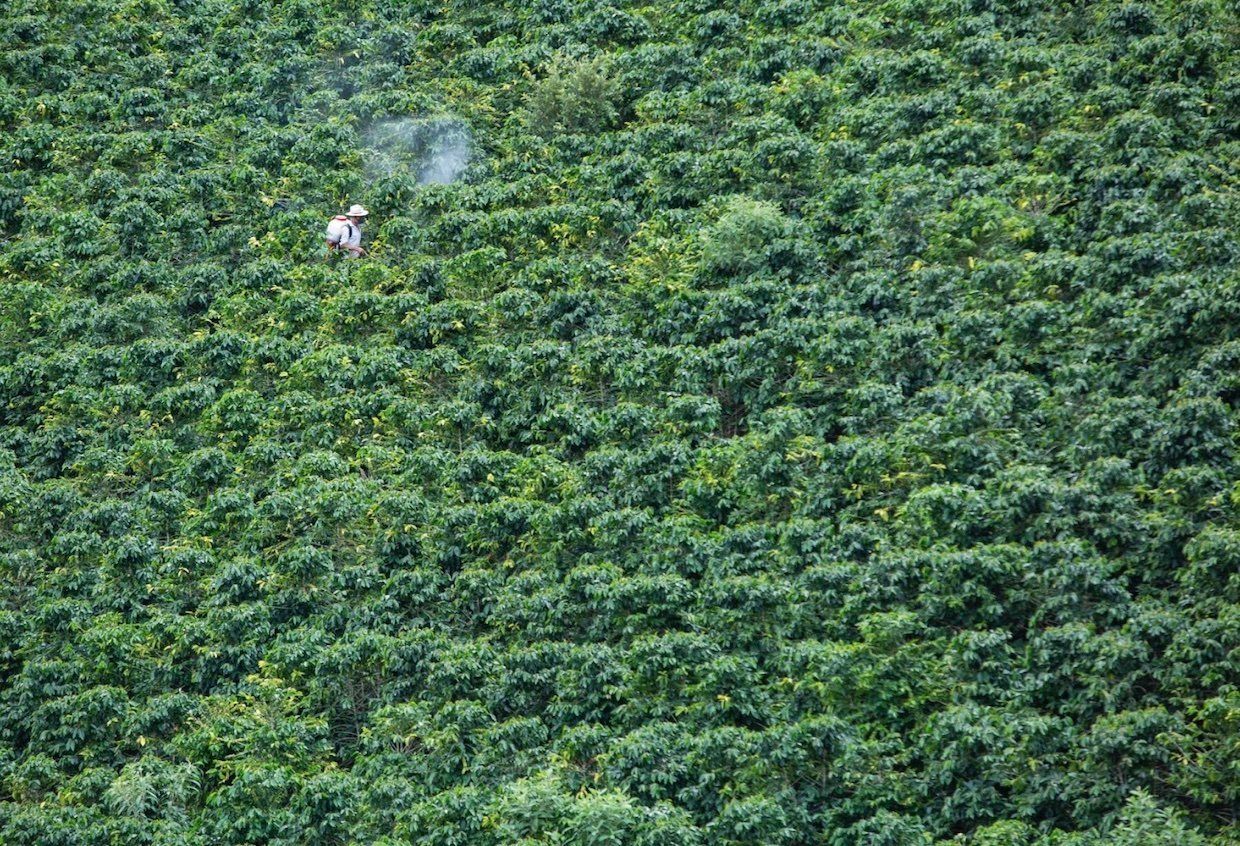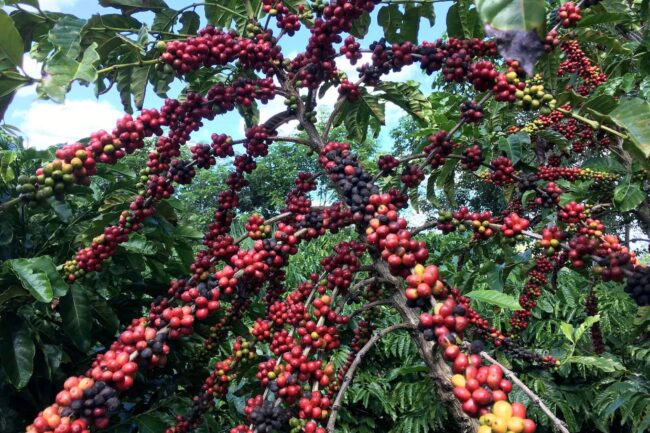As we embark on our shared learning journey Deconstructing Sustainability in Coffee, it’s time to take a closer look at what the term means, and how that might affect how we collectively think, talk and act moving forward.

I’m excited to start with the subject of economic sustainability.
It’s a big, complicated topic, and a very personal one for me as a director at an international non-governmental organization (a.k.a. an INGO) dedicated to sustainable living incomes in rural communities, particularly in the coffee sector.
Yet it’s a good starting point in unpacking coffee sustainability as a whole, since the very concepts of sustainable agriculture and sustainable value chains arguably rely on the premise of farmer livelihoods. As the saying goes, “no farms, no food.” In coffee, the translation is “no coffee farms, no coffee.”
Experience — and more importantly, farmers directly — tell us that essentially all of the dimensions of sustainability, including economic and social components, hinge upon agricultural products being a viable source for livelihoods.
In short, living incomes are required to allow upstream actors to provide for their families, invest back in their businesses, and maintain a decent standard of living.
As any entrepreneur knows, profitability is the means through which other impacts and initiatives can come to life, while a lack of profitability carries the opposite effect.
Digging Deeper into Economic Sustainability
If the basic farm economics don’t net out — meaning the efforts required to produce and sell coffee eat up all reasonably available time and resources, yet still don’t result in a proper payoff — then further investment is a nonstarter.
This is likely true even if those investments would spur positive outcomes across social and environmental dimensions, or even if they would lead to improved economic outcomes in the long term.
The poverty cycle dictates that investing in longer-term, future-forward shifts, when current compensation is inadequate simply to make ends meet in the present, is impossible. Economic unfeasibility is what we might consider a root-cause barrier to broader sustainability aims, which might be anything from workers’ rights to pollinator protection.
Thus, ensuring sustainable economic returns should be considered a pre-condition, or essential infrastructure, when considering all other initiatives. Just like agriculture is a linchpin for rural development, income is a linchpin for agriculture’s sustainability.
Even among sustainability-minded buyers, the most popular approaches to addressing economic sustainability involve measuring prices against the ICE futures price, a.k.a the “C market price.” Buyers often embrace an “X is much better than the C” mindset, yet that may not reflect a clear goal, or an understanding of what economic sustainability actually means for coffee farmers.
This perpetuates the chasm between perceptions of what the market will bear and realities of what producers need. Organizations like Heifer International and Fairtrade International have developed methodologies to tie contract prices with living income benchmarks, for the exact purpose of bridging that divide.
Production Interventions Are Not Necessarily Sustainable
This concept of sustainable economic returns is particularly relevant when considering volatile tropical crops such as coffee, where yields and markets change from crop season to crop season.
Supporting farmers in improving their production is considered a hallmark economic sustainability lever, with the traditional thinking being that more product or higher-quality products equates to higher incomes. However, year-over-year impact requires market stability — something that does not currently exist in the coffee sector. As a result, this quantity and quality approach ignores the inherent linkages between livelihood and socio-environmental outcomes.
I would argue that if farmers are underproducing, providing services to help them reach a viable baseline does indeed fall under economic sustainability. However, if farmers are producing at or above reasonable expectations, but still financially suffering as a result of insufficient prices, simply pushing them to produce more or better is fundamentally unsustainable.The same argument applies to quality improvements, especially if the costs of getting to a certain cupping threshold is not recouped by compensation.
Competing Sustainability Interests
For example, coffee presents a classic case of short-term returns disincentivizing smallholder farmers from engaging in environmentally sustainable practices that would lead to long-term benefits. Growing coffee under a tree canopy is critical for a host of ecosystem services — such as carbon sequestration, micro-climate control, biodiversity, soil health, nutrient cycling, water usage, mitigation of agri-chemical usage and associated pollution and runoff — as well as resilience to disease and pests.
However, such cultivation can inherently limit output. As lower plant density may translate to less coffee per hectare, cultivating coffee in the most environmentally beneficial ways can have unfortunate implications for farm-level financial returns.
If increasing volume is one of the only levers producers have to earn more money — with market prices and production costs largely outside their control — then what will become of ecosystem conservation and long-term land viability? Unfortunately and understandably, today’s financial urgency typically takes priority over tomorrow’s.
Economic Rewards for Sustainable Production
Not only do current market conditions disincentivize investments in long-term environmentally and socially sustainable practices, the market also does not adequately reward farmers who are presently engaging in sustainable production.
The predominant price structures for sustainable coffee are heavily reliant on Voluntary Sustainability Schemes (VSS), where price premiums on top of the C market price are provided when certifications are met.
Unfortunately in many cases, even prices with attached premiums for certification don’t adequately compensate farmers for the increased costs of compliance, which might involve more labor, more time, more capital investment and so on. Additionally, not all certified coffee is purchased as such, meaning farmers may receive lower market prices despite increased costs for compliance.
Moreover, the financial rewards for certified coffees tend to be most realized among downstream actors, such as importers, roasters and even coffee shops. VSS can provide these actors with tangible and intangible value through compelling “origin stories” and feel-good messaging. In essence, they associate their brand and products with the sustainability efforts of producers, and are directly awarded for it by consumers. On the other hand, farmers don’t see an equitable exchange for their ecosystem or social services, which may be perceived as simply meeting a market demand, rather than as financially valuable assets in their own right.
The phrase “People-Planet-Profit” has been widely adopted in the corporate world as a recipe for sustainable business, yet who’s profit does it refer to? Hint: It’s never that of farmers. This is an example of the tradeoffs that companies make when gauging sustainability efforts.
There is a tendency for downstream actors to isolate these three spheres (people, planet, profit), despite proof that economics and environment mutually reinforce one another, as do economics and the social dimension (people).
Nevertheless, with only rare exceptions, even the most informed and robust sustainable sourcing strategies don’t address farmers’ compensation relative to their production costs and overall financial needs; instead, they indirectly chip at a lack of economic sustainability through production interventions.
Economic Sustainability of Crop Diversification
Diversification initiatives are similarly murky. On one hand, environmentally sustainable farms require polycultures, which can both increase earnings and reduce dependency on income from coffee alone.
However, there is a difference between farm diversification and income diversification. The former strategically mimics coffee’s most natural environment, while the latter subsidizes untenable coffee prices through other, often equally risky, activities.
Professional coffee farmers should be able to earn a professional income from coffee. Crop diversification, especially when suggested by downstream actors, is in some ways a translation of the gig economy. Farmers cobbling together a living income from numerous sources is not sustainable; baking economic sustainability into the cost of goods among coffee buyers is.
____
Suorce: dailycoffeenews




